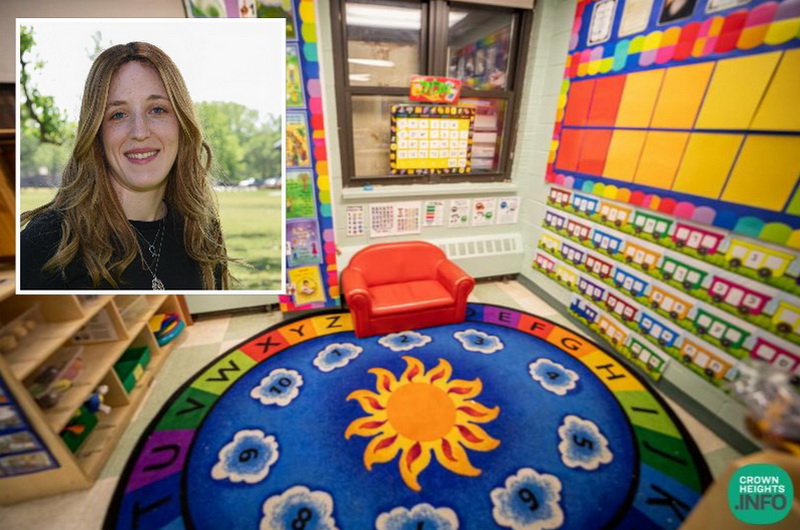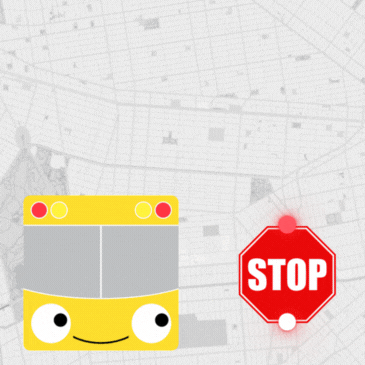
Collaboration Over Competition: The Key To Embracing Diversity
by Mushky Kulek – Originally posted to https://cojds.org/
How do we teach children to embrace diversity? I submit that we don’t need to; we just have to stop unteaching it. Children are not born with prejudice. In fact, babies naturally accept differences and embrace diversity without hesitation. They love everyone who loves them. They don’t see color or differences the way adults do.
As children grow (think preschool age), they begin to notice differences, which is an important part of their development. It’s how they learn colors, numbers, and letters, noticing differences and similarities between things they see or hear. They begin to make observations and ask straightforward and honest questions, often directly to the people who look different and other times to the trusted adults in their lives. “Why is her skin darker than mine?” “Why is his hair orange?” “Why does he have dots on his face?” We answer them matter-of-factly: “That’s how Hashem made him/her. Doesn’t it make life so much more interesting when nobody looks exactly the same? That would be so boring!” The children accept the answer just as matter-of-factly.
As they get older, in kindergarten or first grade, children begin to think more abstractly and notice more nuanced differences. “Why does her mommy wear pants and you wear a skirt?” “Why does his daddy have a beard?” “Why is our davening different than theirs?” So, we delve into more complex answers but still in a matter-of-fact way: “Everyone has a different relationship with Hashem.” “Everyone has different ways of connecting and different ideas of the best way to do that.” Young children understand and accept this, too.
But if children are so accepting of difference, why doesn’t their behavior reflect that, especially as they reach older grades? Why do they exclude kids on the playground? Why do they make fun of those who are not their type or have a hard time accepting them? Why do kids create cliques and social castes? This is a learned mindset, not a naturally occurring one. But who is teaching it to them?
Maria Montessori taught that elementary-aged children (6-12 years old) are in a sensitive period for social development. During this time, they have a strong need and desire to navigate their social world and determine their place in it. The type of social environment we set up for children during this critical stage affects their perceptions of themselves and others.
Generally, we can build two types of environments for our school-aged children:
1. Competitive: In this environment, everything is scored and ranked. There are winners and losers, tiers and statuses. Comparison is constant. In this environment, children quickly learn that within each skill or trait, some people are the best, some are the worst, and others are just average. Children learn that if that girl is the best at drawing, I can’t be the best because, in the drawing category, there can be only one winner. They quickly learn to measure themselves against their peers and rank everyone around them (in their heads or even out loud).
2. Collaborative: This is an environment of collaboration and acceptance. Everyone’s individual growth and accomplishments are celebrated. Collaboration means that each person’s ideas must be heard, and each voice is a crucial part of the group. We acknowledge the effort it took to communicate and work together. We teach children to value each other’s uniqueness as we talk openly in group conversations or class meetings about each of our strengths and challenges, and the value that each one contributes to the group in a matter-of-fact and non-shameful way.
While most would agree that the collaborative environment sounds like what we want, in reality, our children seem to be growing up in a competitive environment. How do school environments become this way? Every learning experience is graded, turned into a contest with winners, or is fueled by a point and prize system. This is facilitated by well-meaning educators because it’s a simple way to motivate kids to work. They want to win! They want to get the recognition of being the best. They want a prize, certificate, good grades, or acknowledgement. But at what cost? Children become adapted to a mindset of comparison and competition, the exact opposite of inclusion and acceptance that we preach to them. They’re taught to compare themselves to their peers and that the classroom is one big ranking system.
What follows are some practical strategies to create a productive yet inclusive and accepting learning environment.
Keep Motivation Altruistic
Young children are naturally curious and want to learn, even without extrinsic motivators. Let’s preserve that for as long as possible. Use reflective language to teach students to reflect inward and be proud of themselves and their accomplishments. Teach students to compete only against themselves- to do better than yesterday. For example, when children do timed reading or minute math facts, the goal should not be to score the fastest in the class but to beat their own score from yesterday. Help them track it so they can see the actual numbers and compare it themselves and then reflect. “Yesterday, you read it in 54 seconds, and today it only took you 51 seconds. Your hard work and practice are paying off. What do you think your goal should be for tomorrow?” When children track their own progress, they feel pride rooted in growth, not superiority.
Regular one-on-one meetings
Create space for self-reflection and individual goal setting. Each month, have students complete a short questionnaire that reflects on their favorite learning activity that month, the one that was the hardest for them, one area they are proud of, and another area they want to work on next. Then, hold a 5-minute meeting with each student to discuss their insights. Acknowledge their hard work and brainstorm ways to help them meet their goals. This builds self-awareness and a deep sense of personal achievement.
Individual Siyum Celebrations
At our school, students have learning benchmarks that they work through at their own pace. When students reach a significant milestone, such as mastering all of the kriyah boxes or the translation of the entire Frequent Chumash Words list, they host a siyum. Parents and classmates are invited. At the siyum, the child presents their learning to the class, and their peers are invited to ask questions or share compliments. Examples of questions might be, “How long did this take you?” “Was it challenging?” “What strategy did you use to master all of this material?” An example of a compliment might be, “You read those words fluently, that was so impressive!” The class then gets to celebrate together with the child with treats and special activities. In this way, children are trained to celebrate their classmates’ accomplishments genuinely, and nobody walks away feeling less than or superior to the rest.
The most memorable siyum of my teaching experience was with a student (let’s call her Raizy) who had struggled to learn how to read, each step of the way. Mastering the alef beis, then the nekudos, then the kriyah boxes; each step took tremendous effort, time, and encouragement. But she finally did it. Letter after letter, word after word, she read and mastered those kriyah drawers while her peers were speeding through Pesukim and Rashi. After much excitement and anticipation, we sat down one afternoon for Raizy’s siyum, with her parents present to celebrate with us. Raizy presented her newly mastered skill while everyone listened respectfully. Then, the comments started flowing in from her peers. “I love how beautifully and quickly you read the words.” “I can tell you worked so hard. You must be so proud of yourself.” We couldn’t have said it better ourselves!
Delay Extrinsic Motivators
Wait until children are as old as possible before you introduce contests and prizes. Even though I would argue children don’t need it even in the older grades, they most definitely don’t need it in the younger grades! When prizes and contests are used, they should be rare and intentional. With intentional and consistent messaging, make sure that the attitude in your classroom is that we learn to learn, to push ourselves and strengthen our brains and learning muscles, to connect to Hashem, and to feel proud of our accomplishments.
We do occasionally add in a prize or contest for fun. Still, this is done in a way that acknowledges the work and effort more than the results. As the deadline nears, teachers make a point of noticing children’s efforts, their creative ideas, and when they push through setbacks. After the work is complete and submitted, have a class discussion to reflect on the process. What did you learn? Which parts of the assignment did you connect with, and which parts were challenging? What are you proud of in this process? It is important to have this discussion right away, BEFORE the “results” of the contest are given out. The goal is that the children should understand the value of what they learned and gained, and analyze whether their work is something they should be proud of. Did I put forth my full effort? Was this my best work? If not, what could I have done better or differently? If the reflection happens before, it won’t matter as much who is deemed the “winner” in the end. And if the person who won really did deserve to win, the children can be genuinely proud of them and happy for them, because they are already feeling full in their own hearts about their accomplishments.
It works. Our kindergarten students work at their own pace on phonics and then blending and word building. When they master the entire phonics curriculum, they get to move on to reading phonics readers, which is something they look forward to and work towards. I will never forget the afternoon in December when I walked into the kindergarten classroom and a group of children ran over to me, jumping up and down with huge smiles on their faces. “Morah! Morah! Avrumi mastered all the sound boxes and is up to BOB books now!” “Morah, look, Avrumi is up to BOB books!” They just could not contain their genuine excitement for their friend.
בֶּן זוֹמָא אוֹמֵר, אֵיזֶהוּ חָכָם, הַלּוֹמֵד מִכָּל אָדָם, שֶׁנֶּאֱמַר (תהלים קיט) מִכָּל מְלַמְּדַי הִשְׂכַּלְתִּי… אֵיזֶהוּ מְכֻבָּד, הַמְכַבֵּד אֶת הַבְּרִיּוֹת, שֶׁנֶּאֱמַר (שמואל א ב) כִּי מְכַבְּדַי אֲכַבֵּד וּבֹזַי יֵקָלּוּ (אבות ד:א)
Ben Zoma taught: Who is wise? He who learns from all men, as it is written: “From all of my teachers I grew wise”… Who is honored? He who honors others, as it is written: “For I honor those that honor Me, and those who scorn Me shall be cursed.”
If we want our children to embrace diversity, we must move beyond tolerance and model honor – the kind that stems from collaboration, empathy, and genuine pride in one another. Because children already know how to love without judgment, we just have to stop unteaching it.
Mushky Kulek is the co-founder and co-director of Shaarei Chinuch Day School, a Jewish Montessori school in Chicago established in 2013. An educator since 2008, she integrates Jewish values with Montessori principles to support each child’s learning and growth in a nurturing, individualized environment. Mushky holds a degree in Early Childhood Education and dual Montessori teaching accreditations. In 2022, she was honored with the 36 Under 36 Award by the JUF Young Leadership Division.















The Middle Path
Mushky, your article contains excellent ideas. I’m not sure, though, that education has to be one way or the other. A non-Montessori school is not automatically a breeding ground for fierce competitors with shallow values, and disregard for peers who learn differently. There is a middle ground, especially if there is a limited budget.
Mushky
Absolutely agree. I’m not here to state that Montessori is the only answer. Rather to share the lessons I’ve learned, that can be applied universally. Many educators and parents struggle with this exact challenge and I am hoping to get people thinking about some factors that can be correlated or part of the issue, that they might not have thought of. Intentionality is key!
Middle Ground (continued)
A key component of a good education is effective teacher training. Even in the worst environment, where one cannot change the way things are run, a caring and competent teacher can create a positive classroom atmosphere where student collaboration, creative thinking, excitement about learning, and a sense of class unity foster confident, respectful, independent students.
Frumma Yehudis
I was a parent in traditional school as well as a parent in Mushky’s school. It brought tears to my eyes to witness the excitement children felt for their friend’s accomplishments. Continue your amazing work! Creating advocates!
Msk
Great article and such an important point. I think the jealousy, feeling of ranking, superiority and inferiority issue keeps so many of us in so many ways from feeling whole and confident in our own unique selves. What a gift to be part of a different childhood experience.